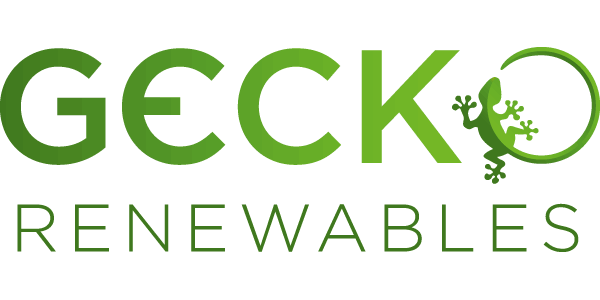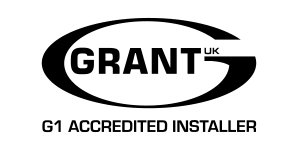
Gecko Renewables are a Yorkshire based family business who are able to install, maintain and repair different makes of Air Source Heat Pumps (ASHP) and heating systems within your home or business.
What is an air source heat pump?
An air source heat pump, sometimes referred to as an air-to-water source heat pump, transfers heat from the outside air to water, which heats your rooms via radiators or underfloor heating. It can also heat water stored in a hot water cylinder for your hot taps, showers and baths.
Heat from the air is absorbed into a fluid. This fluid then passes through a heat exchanger into the heat pump, which raises the temperature and then transfers that heat to water.
A heat pump captures heat from outside and moves it into your home. It uses electricity to do this, however the quantity of heat delivered into your home is much greater than the quantity of electricity used to power the system.
As a heat pump captures heat that is already present in the environment, the system itself does not burn any fuel and therefore emits no carbon dioxide.
How does an air source heat pump work?
Everything around us contains thermal energy – or heat. Heat naturally flows from a warmer place to a colder place. To provide the heat energy in a home when outdoor temperatures are colder, we need heat to flow in the other direction – from a colder place to a warmer place. But how does it do it?
When the pressure of a gas increases, the temperature also increases. When the pressure decreases, the temperature decreases. This relationship between pressure and temperature is the key to how a heat pump works.
The gas is called a ‘refrigerant’ and a heat pump uses electricity to compress this refrigerant, increasing the pressure and therefore the temperature.
As the refrigerant’s heat is transferred to your home through the heat exchanger, it cools down a little. The refrigerant is then allowed to expand so that it cools even further. It’s now cold enough to absorb more heat from outside and begin the process again.
The heat delivered to the heat exchanger can then be used to heat your home. This would normally be done using a central heating system – but it could also be done using warm air in either an air-to-air heat pump or an exhaust air heat pump.
Gecko Renewables can undertake the full design, installation, and maintenance of Air-to-Water Heat Pump Heating System.
Contact us on 01132 571182 or send an email from our contact form for further information or to arrange a free no obligation quote.









![Gecko-logo-web-[RGB] https://geckorenewables.com/wp-content/uploads/2022/08/Gecko-logo-web-RGB-320x160.png](https://geckorenewables.com/wp-content/uploads/2022/08/Gecko-logo-web-RGB-320x160.png)